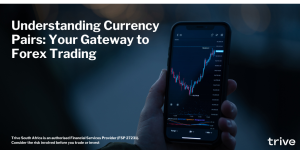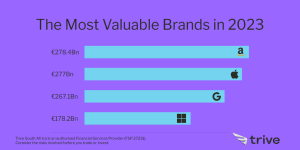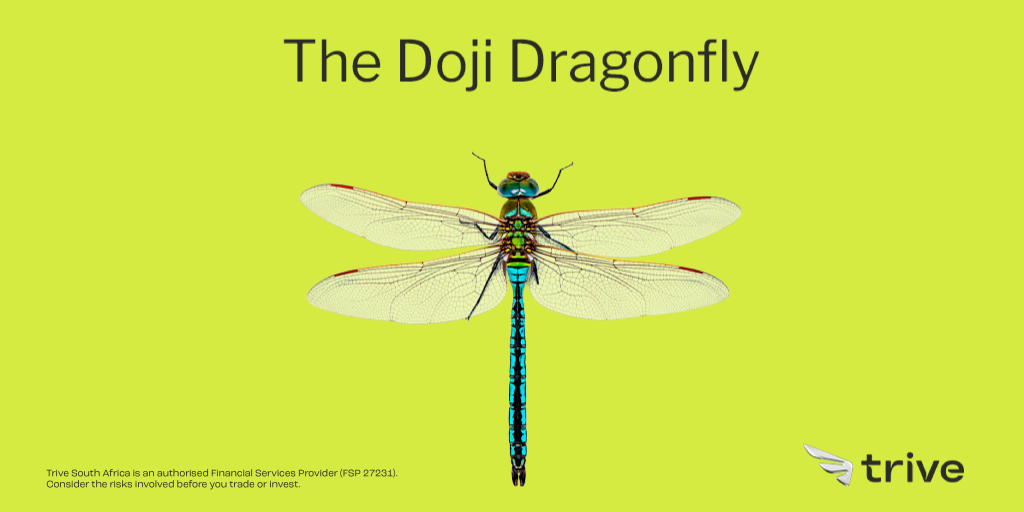
As a trader, a myriad of indicators, intricate patterns, and strategic candlesticks are available, offering the potential to elevate their tactics and secure a coveted advantage over the market’s fluctuations. Amid this vast toolkit, the doji dragonfly emerges as a relatively lesser-known yet invaluable candlestick pattern, poised to indicate potential trend reversals in either direction.
How to Identify a Doji Dragonfly Candlestick
The doji dragonfly candlestick emerges when a security’s open price aligns with the intraday high and closing price while the intraday low is significantly lower. In other words, there was a sharp reduction in the price during the trading session, but buyers were able to absorb the pressure and push the price back up toward the end of the session. As a result, the candle forms an iconic “T” shape, with a long shadow to the downside.
Confirmation of the Doji Dragonfly
As previously mentioned, the doji dragonfly can indicate a potential price reversal, depending on the previous direction of the price action. If the price was trending up, a doji dragonfly could warn traders of a possible reversal to the downside, as sellers were able to take control of the price for some part of the session, suggesting exhaustion on the buy side. Similarly, after a pullback in price, this candlestick could signal a potential pivot to the upside as buyers became present toward the end of the session. However, traders often await confirmation before acting on the candlestick’s signal. In the case of a potential bearish reversal, the subsequent candle must demonstrate a decisive descent and secure closure beneath the doji’s concluding price. Analogously, the bullish connotation of a doji dragonfly necessitates endorsement through an upward thrust, culminating in a closure surpassing the preceding close. Augmenting these analyses, discerning traders judiciously incorporate volume metrics into their assessments. Ideally, a trader could look for a high-volume candle followed by high-volume confirmation, a synergy that inherently heightens the probability of successful execution.
Execution of Doji Dragonfly Trade Signal
The common execution of the signal is to enter shortly after the confirmation candle closes. In the case of a potential bullish reversal after a downtrend, traders often enter with a stop loss below the dragonfly candle’s low. Similarly, a short position after an uptrend sometimes goes hand in hand with a stop loss at the high of the dragonfly doji candle. However, there are several risks coupled with such a strategy. Firstly, a large dragonfly candle could result in a trade executed a long way from the stop-loss, increasing the risk of the trade. Secondly, as with any trading indicator, there is no guarantee that the reversal will occur, and with the low occurrence of this candlestick pattern, it is often used in conjunction with other indicators and patterns. There is also no target level associated with trading the doji dragonfly reversal signal, which requires further discretion on the trader’s part.
Examples of Successful and Unsuccessful Signals
The first example is a chart of the Nasdaq 100 futures (CME: NQ) in the 2H timeframe, where the price was trending up before the doji dragonfly candlestick warned of a potential reversal to the downside. Confirmation came from a high volume push down, resulting in a large red confirmation candle closing below the low of the doji dragonfly candle. Thereafter, a price reversal resulted in the formation of a new downtrend, suggesting a successful signal.
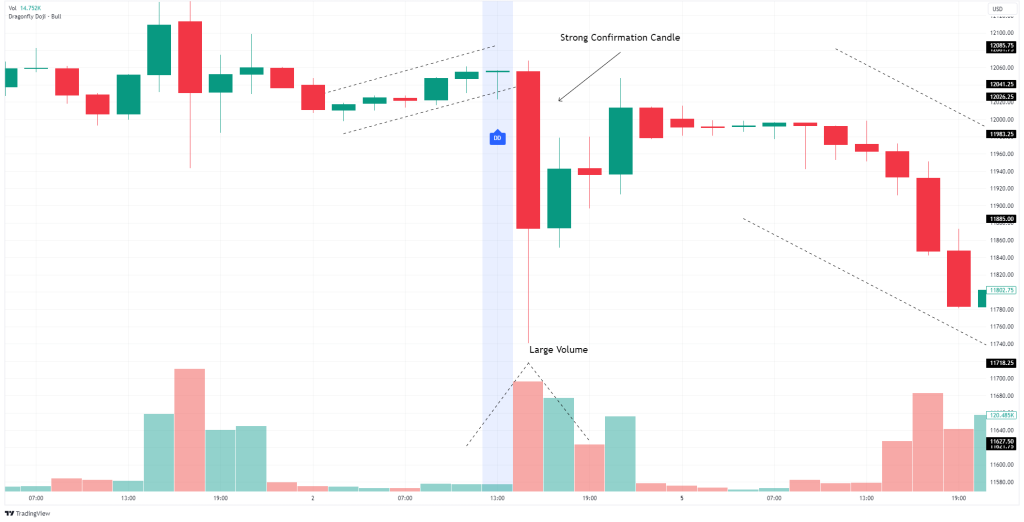
However, this is not always the case. The chart below shows the price action of the S&P 500 futures (CME: ES) in the 4H timeframe. With the price trending down, the doji dragonfly signalled a potential reversal to the upside. However, the candle occurred at shallow volumes, while the confirmation candle failed to close higher than the doji dragonfly high. As a result, this candle merely represented a lack of buyers and sellers in the market rather than a trend reversal, and as a result, the prior downtrend continued.
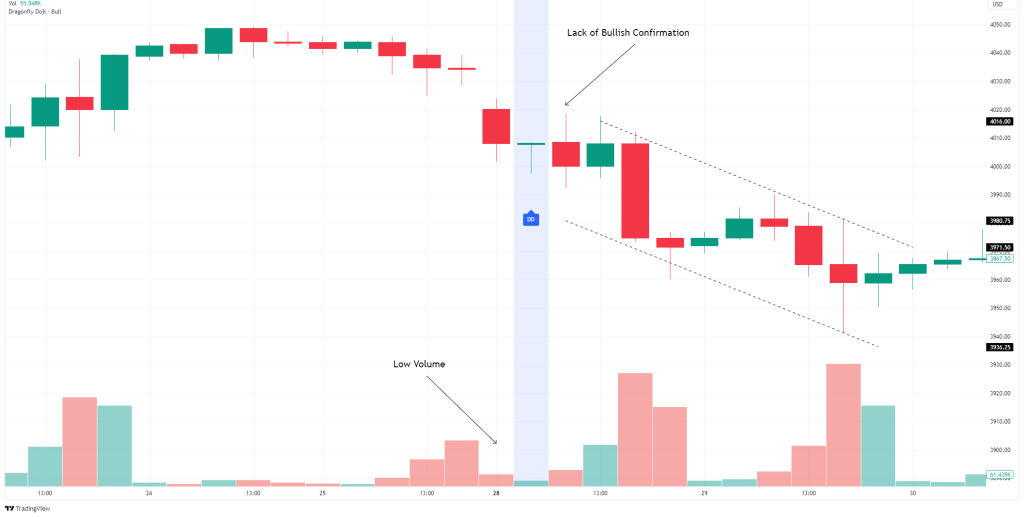
Summary
The Doji Dragonfly candlestick pattern does not occur often but can be a warning for a potential price reversal. This candlestick is applicable on most timeframes but requires confirmation from the following candle, as well as volume. This candlestick is often used in conjunction with other indicators and patterns and does not guarantee a successful signal, and therefore requires discretion on the individual trader’s part.
Piece written by Tiaan van Aswegen, Trive Financial Market Analyst
Sources: Tradingview, Investopedia, Day Trade The World
Disclaimer: Trive South Africa (Pty) Ltd, Registration number 2005/011130/07, and an Authorised Financial Services Provider in terms of the Financial Advisory and Intermediary Services Act 2002 (FSP No. 27231). Any analysis/data/opinion contained herein are for informational purposes only and should not be considered advice or a recommendation to invest in any security. The content herein was created using proprietary strategies based on parameters that may include price, time, economic events, liquidity, risk, and macro and cyclical analysis. Securities involve a degree of risk and are volatile instruments. Market and economic conditions are subject to sudden change, which may have a material impact on the outcome of financial instruments and may not be suitable for all investors. When trading or investing in securities or alternative products, the value of the product can increase or decrease meaning your investment can increase or decrease in value. Past performance is not an indication of future performance. Trive South Africa (Pty) Ltd, and its employees assume no liability for any loss or damage (direct, indirect, consequential, or inconsequential) that may be suffered from using or relying on the information contained herein. Please consider the risks involved before you trade or invest.


